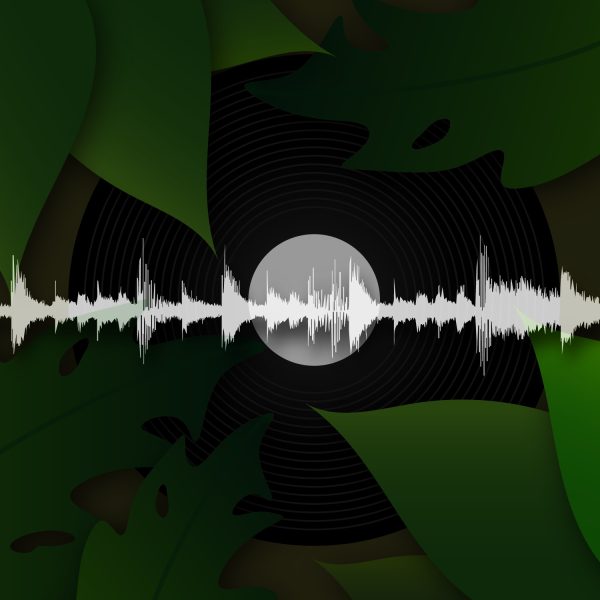
It has been a little over three decades since the frenetic sounds of jungle first rang out across the United Kingdom. Early standards of the rave-oriented genre were marked by innovative sampling techniques; up-tempo breakbeats, throbbing basslines and spirited reggae vocals all proved crucial in its forward-thinking appeal.
Jungle grew out of the breakbeat hardcore scene, one of the forefathers of the UK’s rave scene. The genre was marked by eclectic sample choices laid over four-on-the-floor beats, itself owing its existence to electronic music styles that came before — namely techno and house. As the 90s began, the breakbeat hardcore sound became increasingly fragmented due to production differences. One of the resulting offshoots was jungle.
It is important to note that from its very start, jungle has been a Black art form, both in its stylistic origins and those who proselytized it. Many of its sonic pioneers were descendants of the “Windrush generation,” a term used to describe British African-Caribbean people who arrived in the UK during the 50s and 60s. This wave of migration came with the culture of everyone’s place of origin, especially their musical inclinations. The sound system — a Jamaican concept of disc jockeys playing as one — found a second home in the UK, spinning jungle tunes while preserving the ethos of their cultural ancestry. Reggae vocals can be heard from the very first jungle records, conserving this same heritage while providing lyrics to listeners.
Socioeconomic status also factored into jungle’s emergence. Racism and institutional prejudices in a conservative UK overwhelmingly affected its Black citizens, so jungle, with its African-Caribbean roots stood as a defiant reaction to these conditions. Even still, the scene promoted unity amongst all junglists, as the music was made and appreciated by every race.
Jungle was very much an underground phenomenon in the early 90s, but its listener base was expanded due to the UK’s storied history of pirate radio. Kool FM, Rude FM and Rush FM frequently played sets from some of the biggest names in the scene. By 1994, legal radio started spinning jungle on air, pushing the genre into the mainstream. Scene legends like DJ Randall and DJ Rap were given spots to rinse new sets, further legitimizing the genre. “Incredible” by M-Beat featuring General Leavy and “Original Nuttah” by UK Apache with Shy FX were amongst the first jungle tracks to crack the UK Top 40 chart as a result of the style’s newfound acceptance. Pioneers like Remarc, Fabio, Grooverider and LTJ Bukem mixed sets that gained more traction than ever before.
However, as jungle’s popularity peaked, disagreements appeared among musicians and ravers alike. There was a growing fear that the music and its message would be lost because of the sound’s increased visibility. They had good reason to fear, as record labels — institutions notorious for sensationalizing, homogenizing and exploiting artists — swooped in to capitalize on the “in” sound. In response to these suspicions, numerous junglists established smaller, more equitable labels to continue the flow of jungle, often through dubplates — another technique inspired by Jamaica’s musical tradition.
As the nineties continued, mainstream interest in jungle waned, people’s ears now tuned into newer electronic genres. Still, for many of those who grew up around the clubs, raves and pirate radio never left. As a genre, jungle splintered, much like breakbeat hardcore before it. Drum and bass emerged as the predominant breakbeat-oriented style, dropping the reggae influences that defined jungle. With the turn of the century and without consistent radio play from major stations, jungle essentially went underground again.
Nevertheless, jungle appears to be experiencing a revival of sorts. Interest in the genre has seen an increase not seen in three decades. Like most musical resurgences, it is fueled by the internet and its ability to facilitate both the discovery of past culture, as well as the collaboration between artists.
One of the artists at the forefront of jungle’s new era is Nia Archives. The 25-year-old has already been nominated for a Mercury Prize, an award for the best album by a UK artist. Nia’s album, “Silence is Loud,” is a fantastic collection of jungle tunes, produced and sung by her. It invokes the rawness and emotional intensity of the early 90s rave scenes with production skills from the new millennium. Nia is a third-generation Windrush immigrant herself, and her family’s background gave her a unique look into sound systems and pirate radio, sending her down the path of a junglist.
Across the Atlantic Ocean, even more junglists are elevating the genre. Dazegxd, a Brooklyn, New York native, and Gum.mp3, hailing from Roanoke Rapids, North Carolina, mesh the junglist formula with the previously separate atmospheric drum and bass, resulting in futuristic yet grounded sound designs. The two released a collaborative jungle album last summer entitled “Girls Love Jungle.” The tape’s atmospheric melodies, rattling breakbeats and hypnotic vocals flow throughout the entire run time, serving as a proper love letter to the junglists that came before them. Armed with digital audio workstations instead of antiquated samplers, the two consistently and precisely bend sounds to their will. Of course, the two are also known for their entrancing sets, essentially a callback to earlier times when jungle was abundant in clubs.
These artists are just a few of many new-age junglists trying to bring appreciation to the jungle genre. Their innovations have proved that it is not a stagnant style; rather, it is one that adapts with technology and taste.



